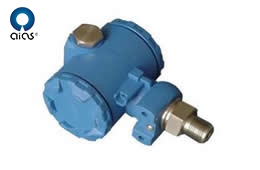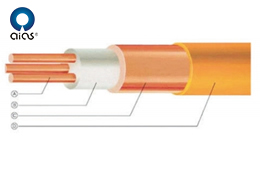Function and scope of application
UHZ-50 type magnetic float level gauge (hereinafter referred to as level gauge). Used for liquid level detection of various pressured (or open) liquid storage equipment (towers, cylinders, tanks, spherical vessels and boilers) in industrial processes. It can display the working conditions and liquid level of various liquids on the spot. Equipped with a liquid level transmitter, the position signal of the liquid level can be transmitted remotely. The purpose of automatic control and measurement of liquid level is achieved through certain electrical devices.
The level gauge is a reliable and safe detection instrument. Due to the isolation and closed structure of magnetic coupling. Especially suitable for the detection of flammable, explosive, corrosive and toxic liquid level. Thus, the liquid level detection method of the original complex environment becomes simple, reliable and safe.
The level gauge has a direct-reading feature of on-site display. There is no need for multiple sets of level gauge combinations. There is a single unit for full range measurement. The equipment has fewer holes, the display is clear, and the logo is eye-catching. The reading is intuitive and other advantages. When the level gauge is directly equipped with a display instrument, the intermediate transmission of the system signal detection can be omitted to improve its transmission accuracy.
working principle
The level gauge uses the principle of a communicating device. The liquid in the container is introduced into the main tube of the level gauge at the same height. The floating ball assembly in the main tube is based on the principle of buoyancy and magnetic coupling. Attached to the outside of the main tube is a turning column that can reflect the magnetic phenomenon as a display of the liquid level. With the change of the liquid level in the main pipe, the height of the float assembly also changes accordingly. Therefore, the turning column outside the main tube is turned over by 180 degrees. When the liquid level rises, the turning column turns from white to red, and when the liquid level drops, the turning column turns from red to white. The red and white boundary of the display is the actual height of the medium level in the container. So as to achieve the purpose of liquid level detection such as
Features:
1: Suitable for liquid level measurement of the liquid medium in the container. In addition to on-site display, it can also be equipped with remote transmitters, liquid level controllers and other functions.
2: The display is intuitive and eye-catching, and the display direction can be changed according to user requirements.
3: The measuring range is large, not limited by the height of the container.
4: The display component is completely isolated from the measured medium, so the sealing is good, reliable and safe.
5: Simple structure, easy installation and easy maintenance.
6: Corrosion resistance, explosion-proof
The main technical parameters
1. Measuring range: 0-300mm, 0~6000mm
2. Measurement accuracy: ±10mm
3. Medium density: ≥0.5g/cm3
4. Working pressure: 1.0, 1.6, 2.5, 4.0MPa
5. Working temperature: A=80℃ B=120℃ C=200℃ D=300℃
6. Medium viscosity: ≤0.4Pa.S (under medium conditions, L should use heating jacket for medium with high viscosity or easy to crystallize at low temperature)
7. Specific gravity difference of measurement interface: ≥0.15g/cm3
8. Factory connection flange size: DN20 PN2.5 (metric pipe)
9. The connecting flange adopts the HG20592-20635-97 flange standard issued by the Ministry of Chemical Industry in 1998. If other flange standards are used, please indicate when ordering. Flange connection hole distribution shape: square.
Rectifier
A large number of diodes are used in converters, which convert industrial frequency power into DC power. Two groups of transistor converters can also be used to form an invertible current converter, because the power side of the DC voltage rectified by the rectifier contains a pulsating voltage of 6 times the frequency of the power supply, and the pulsating current generated by the inverter also changes the DC voltage . In order to suppress voltage fluctuations, inductors and capacitors are used to absorb the pulsating voltage (current). If the device capacity is small, if the power supply and the main circuit components have a margin, the inductor can be omitted and a simple smoothing loop can be used.
Inverter
Contrary to the rectifier, the inverter converts the DC power into the AC power of the required frequency. A 3-phase AC output can be obtained by turning on and off the 6 switching devices in a determined time. Take the voltage-type pwm inverter as an example to show the switching time and voltage waveform.
The control circuit is a circuit that provides control signals to the main circuit of the asynchronous motor (voltage and frequency are adjustable). It has frequency and voltage "calculation circuit", main circuit "voltage and current detection circuit", and motor "speed detection" Circuit", the "drive circuit" that amplifies the control signal of the arithmetic circuit, and the "protection circuit" of the inverter and the motor.
(1) Calculation circuit: compare the external speed, torque and other commands with the current and voltage signals of the detection circuit to determine the output voltage and frequency of the inverter.
(2) Voltage and current detection circuit: It is isolated from the main circuit to detect voltage and current.
(3) Drive circuit: the circuit that drives the main circuit device. It is isolated from the control circuit so that the main circuit device is turned on and off.
(4) Speed detection circuit: take the signal of the speed detector (tg, plg, etc.) installed on the asynchronous motor shaft machine as the speed signal, and send it to the calculation loop. According to the instruction and calculation, the motor can run at the command speed.
(5) Protection circuit: Detect the voltage and current of the main circuit. When an abnormality such as overload or overvoltage occurs, in order to prevent damage to the inverter and asynchronous motor, stop the inverter or suppress the voltage and current value.
Overview
The main circuit is the power conversion part that provides the voltage and frequency power supply for the asynchronous motor. The main circuit of the frequency converter can be roughly divided into two categories: the voltage type is the frequency converter that converts the DC of the voltage source to the AC, and the filtering of the DC loop is the capacitor. . The current type is a frequency converter that converts the DC of the current source into AC, and its DC loop filter is an inductor. It consists of three parts, the "rectifier" that converts the industrial frequency power supply into DC power, the "flat wave loop" that absorbs the voltage ripples generated in the converter and inverter, and the "reverse circuit" that converts DC power into AC power. Changer".




![[cimages:title]](/upLoad/product/month_2101/202101231611578694.jpg)


